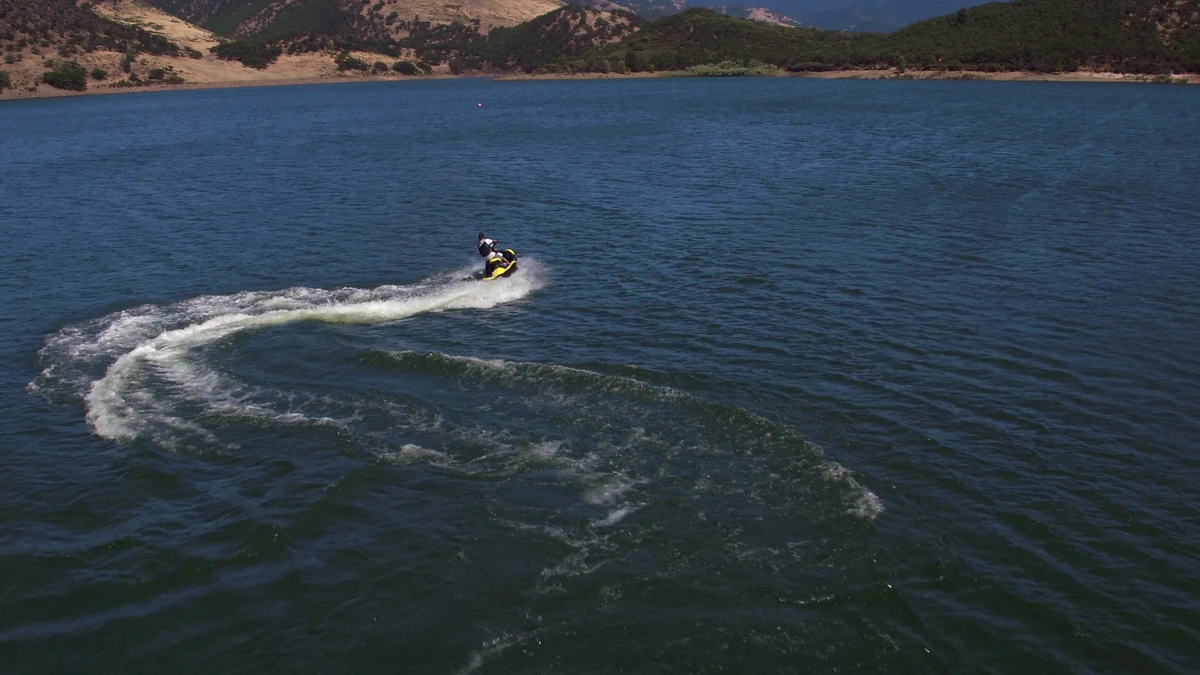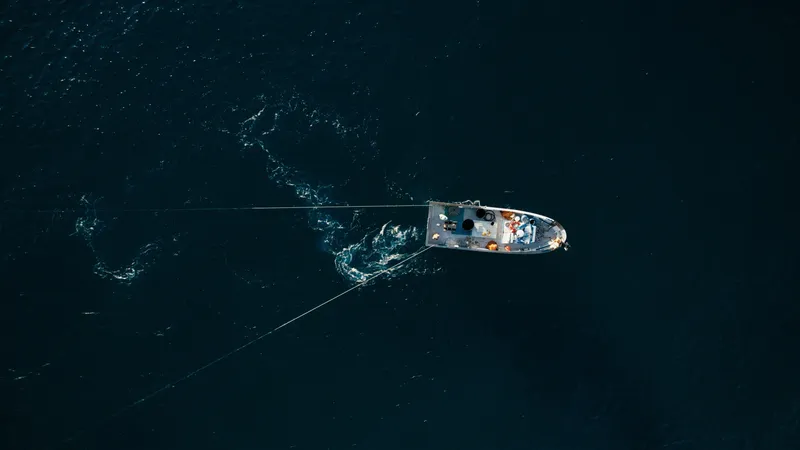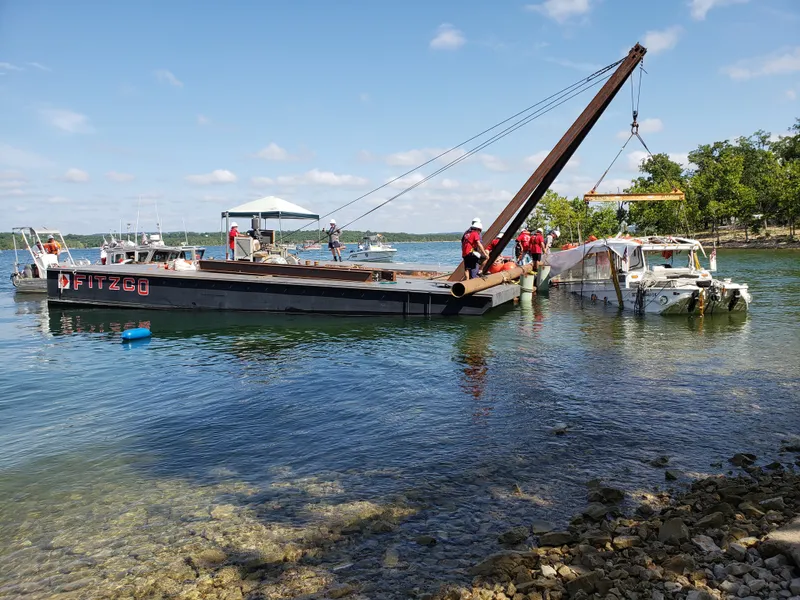Boating Safety Rules and Regulations

Published: 6/30/2022
Safety rules exist to protect boaters and swimmers on Lake Lanier, Georgia. Learn about the laws and regulations that govern boating safety on this popular lake.
Boating Safety Rules and Regulations on Lake Lanier, Georgia
Lake Lanier’s popularity for fishing, swimming, and watersports makes boating safety a top priority. Both Georgia state law and federal regulations set standards for safe boating on Lake Lanier. Violating these rules not only increases the risk of accidents and injuries but can also form the basis for negligence in a legal claim. In recent years, serious incidents have underscored the importance of these safety laws – for example, in May 2020, 13 people were injured in a boating collision on Lake Lanier. The following outlines key boating safety rules – from operator requirements to equipment mandates – and explains how breaching these duties can lead to liability.
Operator Age and Licensing Requirements
Georgia law specifies who may operate a boat or personal watercraft (PWC) on state waters like Lake Lanier based on age and boater education. Operators under 12 years old are not permitted to operate any PWC or any boat over 16 feet in length. They may only operate a boat under 16 feet long with an engine of 30 HP or less, and only if directly supervised by a competent adult (age 18+ and not under the influence). Youths 12 to 15 years old may operate a vessel under 16 feet (including PWCs) only if they have passed an approved boating education course or are accompanied by a competent adult. Operators 16 or older may operate any recreational boat or PWC on Georgia waters, but if born on or after January 1, 1998, they must carry proof of completing a DNR-approved boater education course. These age and licensing rules ensure operators have the maturity and knowledge to handle vessels safely. Allowing an underage or unqualified driver to pilot a boat can be extremely dangerous – if an accident occurs, it may be considered negligent supervision or even negligence per se (automatic negligence) for violating safety statutes intended to protect the public.
Life Jacket Requirements and Child Safety
Life jacket (PFD) rules are some of the most critical boating safety requirements. Georgia law requires every vessel to carry at least one U.S. Coast Guard–approved personal flotation device of the proper size for each person on board, and boats 16 feet or longer (except kayaks/canoes) must also have a throwable floatation device onboard. Crucially, children under 13 years old must wear an appropriate life jacket at all times on any moving vessel (unless inside an enclosed cabin).
If a boat is underway, every child 12 and under must be buckled into a life vest – no exceptions. Additionally, anyone riding on a PWC (jet ski) is required to wear a life jacket at all times, regardless of age. These rules reflect general safety principles: life jackets save lives by preventing drowning in the event of falls overboard or collisions. Failing to provide enough life jackets or to ensure children wear them not only violates Georgia law, but also endangers passengers. In a negligence claim, an operator’s failure to follow PFD requirements can be evidence of breaching the duty of care, especially if a drowning or injury occurs that proper life jacket use could have prevented.
Speed Limits and Reckless Boating Regulations
Unlike roadways, lakes typically do not have posted numeric speed limits, but Georgia law requires all boaters to operate at a safe speed for the conditions and to avoid reckless operation. Operating a boat “without due regard for the safety of persons or property” – i.e. reckless operation – is unlawful. For example, zipping through a crowded area or close to shore at high speed shows a disregard for safety. Georgia’s signature “100-Foot Law” imposes an implicit speed limit by requiring boats to slow to idle speed when within 100 feet of specific objects or persons. Under this law, no vessel may exceed idle (no-wake) speed within 100 feet of any moored or anchored boat, dock, pier, bridge, person in the water, shoreline next to a residence, public park or swim area, or marina and other public use areas. This effectively means maintaining headway speed only (just enough to steer) in crowded coves or near the shore. It is also illegal to follow another boat too closely or weave through traffic in a dangerous manner.
For instance, a boat operator must not jump the wake of another boat within 100 feet or “buzz” other vessels. Operating at a speed that causes hazardous wakes or cannot be stopped in time to avoid collision is considered “failure to regulate speed,” another violation of Georgia’s boating laws. All of these rules boil down to a simple principle: travel at a safe speed and distance for the conditions. Ignoring these safety regulations – such as by speeding through a congested area or recklessly swerving – can lead to collisions and injuries. In legal terms, such conduct may be deemed negligent or reckless; indeed, Georgia classifies reckless vessel operation (like wake-jumping too close to others) as a misdemeanor offense, and if it causes harm, the operator faces civil liability for negligence.
Wake Zones and No-Wake Area Enforcement
A “Slow No Wake” buoy marking a controlled zone. Lake Lanier boaters must operate at idle speed in designated no-wake areas to prevent accidents and shoreline damage.
Boat wakes can pose serious dangers, so boaters are required to minimize wakes in certain areas. Large wakes from a fast-moving boat can swamp smaller vessels, injure swimmers, or damage docks and shoreline property. To address this, Lake Lanier has designated no-wake zones, typically marked by buoys reading “Idle Speed” or “Slow No Wake.” Georgia’s 100-foot law essentially establishes no-wake zones around any people in the water, docks, bridges, or moored boats – within that 100-foot radius, boaters must keep to idle speed so their wake is minimal.
In practice, this means when approaching marinas, boat ramps, swim beaches, or private docks on Lake Lanier, operators should slow down well in advance. “Idle speed” is defined in Georgia law as the slowest speed needed to maintain steering – essentially creating no appreciable wake. Law enforcement, such as Georgia DNR rangers or Lake Lanier park rangers, actively enforce these no-wake rules, since causing damage with your wake is itself a form of reckless operation under state law. For example, if a boater plows through a no-wake zone and their wake causes a capsizing or injuries, that violation can be used as evidence of negligence. Obeying posted “No Wake” buoys and the 100-foot law isn’t just about avoiding a ticket – it’s about preventing accidents. Boaters who fail to observe no-wake restrictions and thereby cause a crash or capsize can be held liable for the resulting damages, as they violated a safety rule designed to protect others.
Navigation Rules and Right-of-Way
Boating “rules of the road” – also known as navigation rules – dictate how vessels should interact to avoid collisions. Lake Lanier, like all U.S. inland waters, follows the Inland Navigation Rules (COLREGS), which Georgia has adopted. No vessel automatically has “right-of-way” in every situation; instead, specific rules apply based on the type of encounter. Key navigation rules include:
Meeting head-on: When two power-driven boats approach each other head-on (or nearly so), both should steer to starboard (right) and pass port-to-port (just as cars pass on the right side of the road). This way, each boat passes safely on the left side of the other. Crossing paths: If two powerboats are crossing and there is a risk of collision, the vessel which has the other on its starboard (right) side must give way. In other words, the boat on the left must yield to the boat on the right, which should maintain its course and speed as the “stand-on” vessel. The yielding vessel should slow down or turn to pass behind the stand-on vessel. Overtaking: Any vessel overtaking another (coming up from behind within the 135° arc of the stern) must keep out of the way of the vessel being overtaken. The boat being passed should maintain course and speed. The overtaking vessel can pass on either side but must do so safely and at a distance. Power vs. sail and others: Sailboats under sail (no motor) generally have the right-of-way over power-driven vessels, because they are less maneuverable. (However, if the sailboat is also using a motor, it’s considered a powerboat.) Unpowered craft like kayaks or paddleboards also have rights similar to sailboats – powerboats should yield to them. And all boats must yield to any vessel that is not under command (disabled) or restricted in maneuverability (like large ferries or barges, though those aren’t typical on Lanier).
Following these navigation rules is essential for collision avoidance. If an operator violates a right-of-way rule – for example, fails to yield when crossing and strikes another boat – that violation is strong evidence of negligence. Georgia’s boating handbook emphasizes that knowing and adhering to the “rules of the road” is a fundamental part of safe boating, and incidents often occur when operators are unfamiliar with or do not follow these rules. In a legal context, a boater who ignored navigation rules and caused an accident can be held liable for the resulting injuries. In fact, violating navigation rules (which are federal regulations) can be used to establish negligence in court. Lighting Requirements for Night Boating
Visibility
Operating a boat at night or in low visibility on Lake Lanier requires proper navigation lights to prevent collisions. Georgia law mandates that from sunset to sunrise, all vessels must display the appropriate lighting configuration. For motorboats, this generally means red and green sidelights (red on port/left, green on starboard/right) on the bow, and a white stern light visible from behind. Small non-motorized boats (like canoes or paddleboards) must at least have a readily accessible white light (like a flashlight or lantern) to display in time to avoid a collision. In practice, a kayaker at night should carry a flashlight or lantern.
Larger vessels have specific light configurations per their length, but the core idea is that any boat underway at night has a combination of red/green lights indicating its direction and a white light indicating its position. Navigation lights enable boaters to determine each other’s direction and who has right-of-way at night. For example, seeing a red light means you are viewing the port side of another boat – if that boat’s operator sees your green light, you are to their right and they must yield. Conversely, seeing a green light means the other vessel is to your right (you may need to give way). In addition to lights when moving, anchored boats (outside of designated anchorage areas) should display an all-around white anchor light so others can see them.
It’s important to note that personal watercraft are not allowed to operate at night at all – Georgia law prohibits PWC use from sunset to sunrise, so the question of PWC lights shouldn’t arise (they simply must be off the water by dark). Failure to display proper lights at night is not only unlawful but extremely dangerous: a boat running dark is essentially invisible until it’s too late. If a collision happens because one vessel didn’t have lights on, that operator will likely be found negligent (and may also face coast guard or DNR citations). Adhering to lighting requirements is a basic duty – much like a car using headlights at night – and violating this duty can make a boater legally responsible for any resulting accident.
Required Safety Equipment Onboard
Every boat on Lake Lanier must carry certain safety and operational equipment as required by both federal Coast Guard rules and Georgia state law. Being properly equipped can prevent accidents or help respond to emergencies. Key required equipment includes:
- Personal Flotation Devices (PFDs): As noted, one wearable life jacket for each person onboard (and children under 13 must wear them when underway). Life jackets must be readily accessible and in good condition – having them stowed but still in plastic, or buried under gear, would violate the requirement that PFDs be usable in an emergency. Boats 16 feet and over (except paddlecraft) also need a throwable flotation device (such as a cushion or ring buoy).
- Fire Extinguisher: Nearly all motorboats must have a proper fire extinguisher on board. Georgia law specifies that any mechanically propelled boat with enclosed fuel or engine compartments must carry at least one Coast Guard–approved Type B fire extinguisher, with the number required depending on the vessel size (larger boats need multiple). The extinguisher must be charged and accessible. This rule is vital because an engine or fuel fire on the water can be catastrophic if not quickly contained.
- Navigation Lights: As discussed, required if operating at night (red/green sidelights and white stern/anchor lights as appropriate).
- Horn or Whistle: Vessels of 26 feet or more must have an efficient sound-producing device (whistle, horn, or bell) to signal intentions or warnings, per the Inland Rules. Even smaller boats should have some noise-making device to alert others in fog or near misses. Georgia requires Class 2 and 3 vessels (26 feet and above) to carry a horn or whistle audible for at least 1/2 mile.
- Ventilation and Backfire Arrestors: Inboard or stern-drive motorboats (with gasoline engines) must have a ventilation system in engine compartments to prevent fuel vapor buildup, and a backfire flame arrestor on the carburetor. These prevent explosions and fires.
- Throwable Distress Signals: While not generally required on inland lakes for daytime, federally controlled waters have flare requirements. Lake Lanier is inland, so visual distress signals (flares) are only mandated if boating on coastal waters or nighttime on federal waters. However, carrying an emergency signal device is still a good safety practice on large lakes.
- Kill Switch (Engine Cut-off) for PWC and Certain Boats: Georgia law requires PWCs to have an engine cut-off switch (lanyard) and for the operator to attach the lanyard to their person or PFD. This ensures that if the operator is thrown off, the engine stops and the PWC doesn’t become a runaway hazard. Many modern boats have similar kill switches, and federal law requires operators of certain boats under 26 feet to use an engine cut-off switch if equipped, when traveling above displacement speed. This would apply on Lanier as well under U.S. Coast Guard rules.
Before launching, operators should run through a safety checklist to ensure all required gear is on board and functional. Not only can failure to carry required equipment result in fines or the voyage being terminated by law enforcement, it can also support a negligence claim if the lack of equipment worsened an injury. For example, if a fire erupted and the boat had no extinguisher, causing passengers to be burned or jump overboard, the owner/operator’s violation of the fire extinguisher requirement would be strong evidence of negligence. In Georgia, it’s actually illegal to even permit the operation of a vessel that is not equipped as required. These equipment rules are considered minimum safety standards; ignoring them is seen as failure to exercise ordinary care as a boater.
Personal Watercraft (Jet Ski) Rules
Personal watercraft (PWCs), such as Jet Skis or Sea-Doos, are subject to special rules due to their unique handling and popularity on Lake Lanier. By law, PWCs are treated similarly to boats but with some extra restrictions:
- Life Jackets and Safety Gear: Every person riding on a PWC must wear a Coast Guard–approved life jacket (Type I, II, III, or appropriate V) at all times – no exceptions. (Inflatable life vests are not allowed on PWCs.) Also, PWCs must have the safety lanyard (engine kill switch) attached to the operator, or an auto-circling feature, so the craft will stop or circle if the operator falls off.
- No Night Operation: PWCs cannot be operated between sunset and sunrise on Georgia waters. They lack the proper lighting and are too high-risk in the dark. So, all jet-skiing on Lanier must conclude by dusk.
- Speed and Proximity: The “100-foot law” applies to PWCs just as to boats – in fact, many of its provisions were written with jet skis in mind. It is illegal to operate a PWC at more than idle speed within 100 feet of any stationary object (dock, anchored boat, swimmer, etc.). Additionally, a PWC jumping wakes or maneuvering must stay at least 100 feet away from other moving boats. Specifically, a PWC must not run up behind a boat to jump its wake or zip around another vessel within 100 feet – unless overtaking in a lawful manner. Even when overtaking, the PWC cannot cut in sharp to ride the wake; the operator must pass safely and refrain from stunt-like behavior.
- Minimum Age: The same age rules for operating a boat apply to PWCs: operators must be at least 12 (with boater education and supervision) or 16+ (with ID and boater education if born after 1998) to legally drive a PWC. No one under 12 can operate a jet ski at all, even with an adult on board.
- Towing with PWCs: If using a PWC to tow a skier or tuber, Georgia requires that the PWC be rated for at least 3 people (operator, observer, and the person being towed) and that a separate observer be on board to watch the person being towed. Using mirrors in lieu of an observer is not allowed for PWCs in Georgia. Towing (like water-skiing or tubing) is also prohibited on any vessel (including PWCs) from sunset to sunrise.
PWCs are agile and fun, but their misuse has led to many accidents. Common PWC crashes involve operators jumping wakes and colliding with the very boat whose wake they jumped, or losing control in crowded areas. Because of this, Georgia explicitly defines many PWC-related stunts as illegal reckless operation. If a jet ski rider violates these rules and causes injury – for instance, runs too close to a boat and causes an impact – that violation will strongly support a negligence claim by an injured victim. The law recognizes that PWCs, when misused, endanger not just the operator but everyone around, so strict liability standards apply. Owners who lend their PWC to someone must ensure that person knows and follows PWC rules, or else the owner could also be held liable (under Georgia’s owner responsibility laws).
Violations and Negligence Claims in Boating Accidents
Boating safety rules like those above are designed to protect people on the water. When an operator violates a safety statute or regulation and someone is hurt as a result, Georgia law may treat that violation as evidence of negligence, or even negligence per se. Negligence per se means the breach of a law meant to protect public safety is considered a breach of the duty of care in a civil injury case.
The plaintiff still must prove the violation caused the injury, but they don’t have to separately prove the operator was being careless – the illegal conduct speaks for itself. For example, if a boater was operating drunk and caused a crash, the violation of the BUI law would presumptively establish the duty and breach elements of negligence. Similarly, crashing into another vessel because one failed to keep a proper lookout or violated a right-of-way rule would indicate negligence by law.
Not every rule violation automatically results in liability – the violation must be connected to the harm. But it often is in boating accidents. Consider a scenario: a boat driver ignores the 100-foot no-wake rule and speeds through a marina, and their wake capsizes a smaller craft injuring its occupants. The injured parties can point to the 100-foot law violation as clear evidence of the operator’s negligence. Likewise, if a child passenger is hurt and was not wearing a life jacket, the operator (or responsible adult) who failed to ensure compliance with the child PFD law could be considered negligent for breaching a safety duty. Georgia courts will look at such statutes to help define the standard of care expected of boat operators.
Negligent Operation
In Georgia, there is also a specific statute that makes boat owners liable for injuries caused by the negligent operation of their vessel, whether the negligence consists of violating a statute or just failing to use ordinary care. O.C.G.A. § 51-1-22 effectively codifies an “owner consent” rule: as long as the owner gave permission for the operator to use the boat, the owner can be held liable for the operator’s negligence (with a limited exception if the operator is a family member, consent is presumed). This means if you lend your boat to a friend who then breaks a safety law and causes an accident, you as the owner can be named in the negligence lawsuit as well. The statute explicitly references negligence as consisting of a violation of the statutes of this state or of neglecting to observe ordinary care – reinforcing that breaking boating laws (like BUI, safe speed, lighting requirements, etc.) is a form of legal negligence.
It’s worth noting that Georgia follows a comparative negligence rule in injury cases. If an injured victim also behaved negligently (for instance, a passenger stood up in a moving boat against safety advice, or a victim in another boat wasn’t displaying proper lights), a jury can assign a percentage of fault to each party. As long as the plaintiff is less than 50% at fault, they can still recover damages (reduced by their share of fault). So, adherence to safety rules is important for all parties – a victim’s failure to follow some boating safety practice could reduce their compensation.
In Summary
The safety principles governing Lake Lanier – from who can operate a boat, to life jacket usage, sober operation, speed and wake control, navigation rules, lighting, and equipment carriage – are not just best practices; they are legal requirements. Violating these rules not only risks fines or criminal charges, but also creates civil liability if someone is injured. Boating accidents often have devastating consequences, and courts will scrutinize whether a boater was following the laws designed to prevent such accidents. Breaking any of Georgia’s boating laws can be deemed an act of negligence if it contributes to a crash or injury. By understanding and obeying these rules, boaters on Lake Lanier can keep everyone safer – and protect themselves from legal jeopardy. Should an accident occur, thorough knowledge of these regulations will be central to determining fault and responsibility.
Know the law before you hit the water – it could save a life, and it could save you from liability.
Sources:
Official Code of Georgia Annotated (O.C.G.A.) Title 52, Chapter 7 – Georgia Boat Safety Act provisions; Georgia DNR Law Enforcement Division – Boating Rules and Regulations (Boating Handbook); U.S. Coast Guard Inland Navigation Rules (COLREGS) and Federal Regulations applicable to inland waters; Georgia DNR Press Releases and Safety Bulletins.
Related Articles





